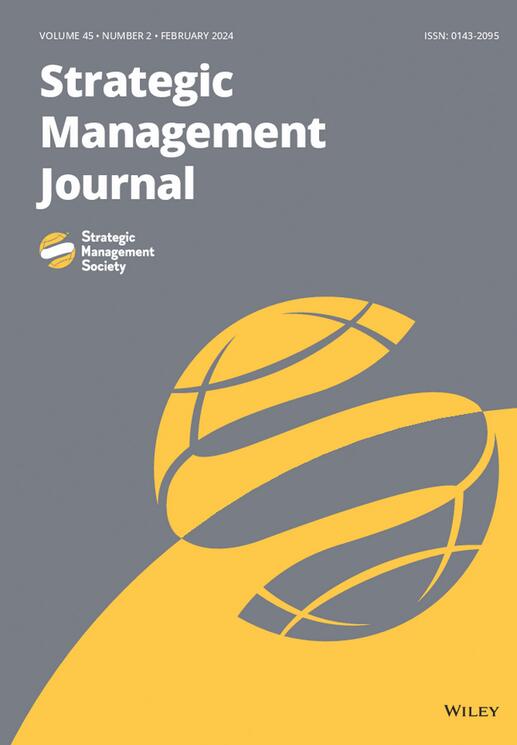Fading corporate survival prospects: Impact of co‐selection bias in resource allocation on strategic intent
IF 6.5
1区 管理学
Q1 BUSINESS
引用次数: 0
Abstract
Our field study of new business development in a German‐based global pharmaceutical company reveals that the emergence of co‐selection bias in project‐level state‐gate resource allocation engendered a corporate‐level innovation portfolio imbalance. We show how the corporate portfolio imbalance resulted from incoherent managerial activities in the multilevel resource allocation process (RAP) decision context and how this caused fizzling out of the proactively established incipient strategic context of the favored‐for‐growth business unit. Moreover, we identify strategic RAP exploitation challenges that explain why sequential exploitation capability and exploitation drive deficits caused an exploitation trap that limited strategic discretion and stymied top management strategic intent to maintain the company's independence. Our integrated frameworks augment strategic management theory of corporate RAP and offer guidance for future research.We draw attention to the little‐noticed phenomenon of co‐selection bias emerging in the project‐level state‐gate resource allocation to new business development and maladaptive corporate‐level innovation portfolio outcomes that it may produce. We show how top management can use the Bower–Burgelman RAP model to analyze the multilevel RAP decision context and identify the forces that may engender out‐of‐context managerial agency, such as co‐selection bias. We highlight strategic RAP exploitation challenges that top management must meet by matching the RAP exploitation drive with a commensurate RAP exploitation capability to avoid an exploitation trap, thereby increasing the chances of company survival.企业生存前景黯淡:资源分配中的共同选择偏差对战略意图的影响
我们对一家总部设在德国的全球性制药公司的新业务开发进行了实地研究,结果发现,在项目层面的国家-门户资源分配中出现的共同选择偏差导致了公司层面的创新组合失衡。我们展示了企业创新组合失衡是如何由多层次资源分配过程(RAP)决策背景下不连贯的管理活动造成的,以及这又是如何导致受青睐的增长型业务部门主动建立的萌芽战略背景消失的。此外,我们还发现了战略 RAP 开发方面的挑战,这些挑战解释了为什么连续开发能力和开发驱动力不足会导致开发陷阱,从而限制了战略自由裁量权,阻碍了高层管理者保持公司独立性的战略意图。我们的综合框架增强了企业 RAP 的战略管理理论,并为未来的研究提供了指导。我们提请人们注意在新业务开发的项目级状态门资源分配中出现的共同选择偏差这一鲜为人知的现象,以及由此可能产生的不适应企业级创新组合结果。我们展示了高层管理者如何利用鲍尔-伯格曼 RAP 模型来分析多层次 RAP 决策背景,并识别可能产生诸如共同选择偏差等脱离背景的管理机构的力量。我们强调了最高管理层必须应对的战略性 RAP 开发挑战,即通过匹配 RAP 开发动力和相应的 RAP 开发能力来避免开发陷阱,从而增加公司生存的机会。
本文章由计算机程序翻译,如有差异,请以英文原文为准。
求助全文
约1分钟内获得全文
求助全文
来源期刊

Strategic Management Journal
Multiple-
CiteScore
13.70
自引率
8.40%
发文量
109
期刊介绍:
At the Strategic Management Journal, we are committed to publishing top-tier research that addresses key questions in the field of strategic management and captivates scholars in this area. Our publication welcomes manuscripts covering a wide range of topics, perspectives, and research methodologies. As a result, our editorial decisions truly embrace the diversity inherent in the field.
文献相关原料
| 公司名称 | 产品信息 | 采购帮参考价格 |
|---|
 求助内容:
求助内容: 应助结果提醒方式:
应助结果提醒方式:


